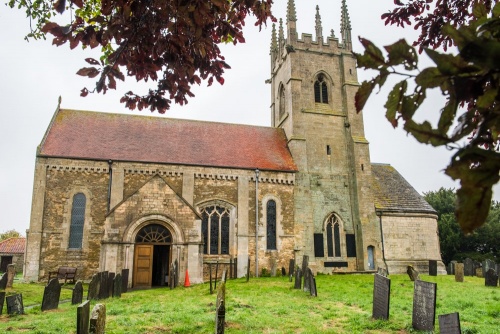
Sempringham, St Andrew's Church
There was a Saxon church at Sempringham, in the marshy fens near Billingborough. Around 1100 Jocelin of Sempringham replaced that Saxon building with a new church dedicated to St Andrew. Jocelin had a son named Gilbert and it is this Gilbert of Sempringham whose name will forever be associated with the site.
ST GILBERT
According to the historical records, Gilbert was born with a 'repulsive physical deformity'. It is not clear what sort of deformity, but whatever it was, perhaps it influenced his outlook on life. Gilbert was trained as a clerk in France. In those days that didn't mean a clerical position as it might today; a clerk was a minor cleric, though not necessarily in holy orders. He entered the household of the Bishop of Lincoln, and in 1129 was appointed Vicar of Sempringham and West Torrington by the Bishop.
SEMPRINGHAM PRIORY
In 1131 Gilbert built a simple range of buildings against the north wall of the church, with accommodation for seven local women, who vowed to live a life of charity, obedience, chastity, and humility. This was the begiing of the Gilbertine Order, the only completely British monastic order during the Middle Ages. The original monastic buildings proved inadequate, and in 1139 Gilbert received a grant of land from Gilbert de Gant (Ghent) to erect a new priory about 350 yards away to the south west.
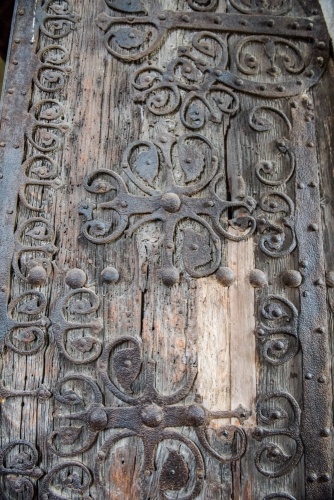
The 13th-century scrollwork door
Sempringham Priory was a double house, with provision for both men and women (though the genders were segregated) and grew to provide a home for 200 nuns and 40 canons. The canons served as priests, and observed a mix of Augustinian and Premonstratensian rules. The order was known for a strict interpretation of those rules, so strict in fact that in 1170 the lay brothers serving at Sempringham rebelled and appealled to the Pope to relax the harshness of priory life.
Gilbert became friends with Henry II and the Gilbertine Order were granted royal protection. Henry might well have regretted his decision when the Gilbertines were accused of siding with Thomas Becket and helping the archbishop to escape to France during his squabble with Henry over church rights.
By the time Gilbert died in 1189 there were 13 Gilbertine priories scattered around England. This number eventually rose to 25 by the time of the Reformation. In 1202 Gilbert was canonised as St Gilbert. His body was exhumed from its place between the altars in the priory church, encased in a lead coffin, and reburied, but the site of the grave has been lost.
THE HOLY WELL (ST GILBERT'S WELL)
A very short distance to the south of the church is a circular stone basin, reached by a set of descending steps, where a spring, or well rises from the ground. The well is said to be associated with St Gilbert and the water is traditionally thought to have healing qualities.
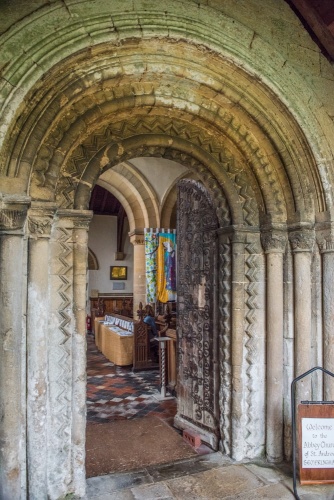
The beautifully carved 12th-century doorway
ST ANDREWS CHURCH
The original 12th-century church at Sempringham was much larger than the still sizeable building we see today. By 1788 the church was in a serious state of disrepair, so the chancel and transept were pulled down, leaving the 14th-century tower now unusually at the east end of the church, with a rounded Victorian apse beyond.
There is a Norman doorway, protected by a 19th-century porch built to mark Queen Victoria's Diamond Jubilee. On the exterior south wall of the tower is a memorial to St Gilbert, with markers depicting the layout of the medieval village, church, well, Priory and fishponds. In the porch is an 11th-century grave cover found in the churchyard.
One of the most extraordinary historical features is the 12th-century doorway. The door itself is 13th-century timber and is supported by an exceptionally elaborate system of iron strapwork and two medieval hinges. The intricate design is like lace in iron.
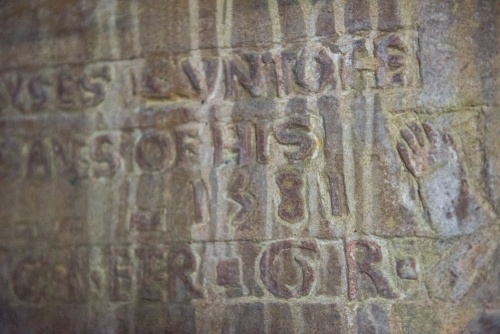
A 1581 challenge to the king?
Most of the pews are Victorian but there are medieval bench ends at the west end of the church. Each bench end is diferent and the benches retain their holes for supporting candle brackets.
Look for the traces of red ochre paint on the underside of one of the arcade arches separaeting the nave and aisle.
The north aisle was rebuilt in 1788 and during the building preparations the foundations of St Gilbert's original school were found.
By the tower is a stone coffin found on the Priory site along with a parish pier. Six bells hang in the tower. The oldest was cast in 1412, making it among the oldest bells in Lincolnshire.
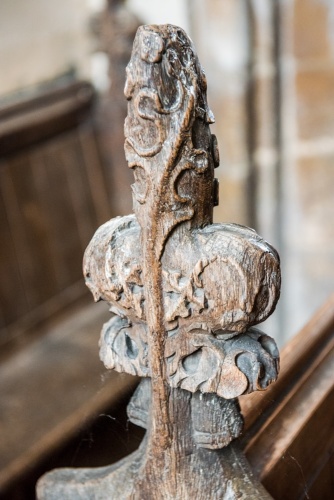
15th-century poppyhead bench end
Another historical highlight is an ancient oak parish chest bound with iron with 3 locks. The priest had one key and the churchwardens had the other 2, so the chest culd only be opened when all 3 were present.
The octagonal font is only decorated on 7 sides, suggesting that it was made to stand against a wall, where the 8th side would not be seen.
In the northwest corner of the churchyard is a small medieval tithe barn.
VISITING
The church is open for irregular services and is often opened on specific afternoons during the summer months. We arrived for one of these afternoon open times on a miserably wet, windy summer day. The church was manned by two volunteers, who had been so certain that no one would come to visit on such a dreadful day that they were sitting in their car chatting and hadn't bothered to open the church.
Thankfully, when they realised we had made a special trip to see the church they were only too happy to open it up and give us a guided tour of the historical highlights. They then left us to explore on our own but stayed around to answer questions.
Visiting the church is an extraordinary experience, even on such a miserable day. The sense of history is palpable, and the church is full of interest.
The Saint Gilbert Memorial
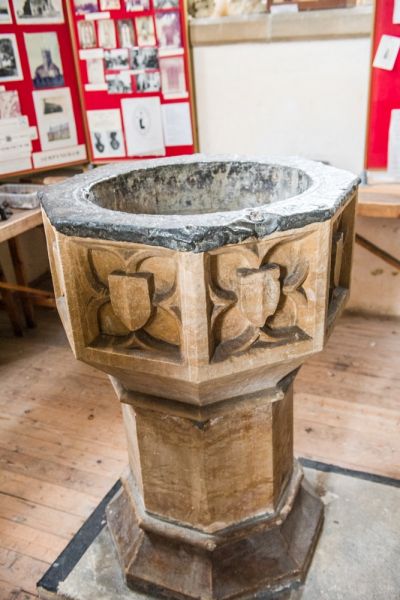
the 15th century octogonal font
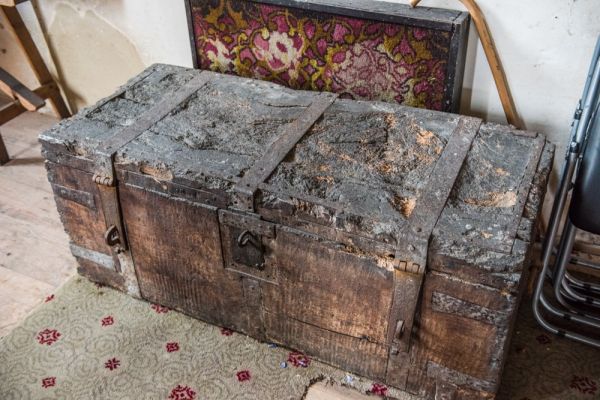
the medieval parish chest
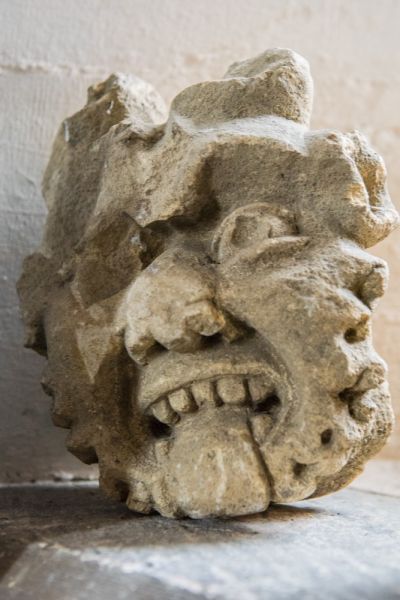
A grotesque medieval carved head
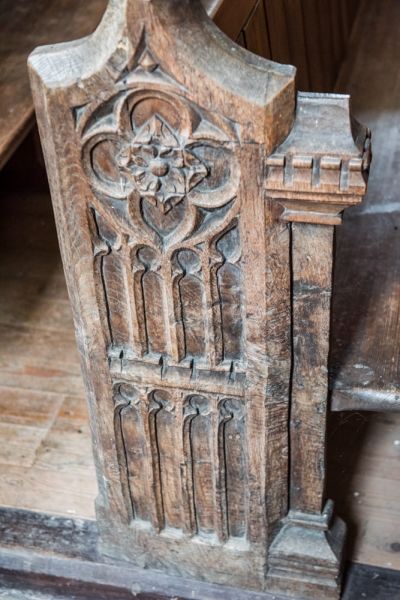
One of the 15th century bench ends
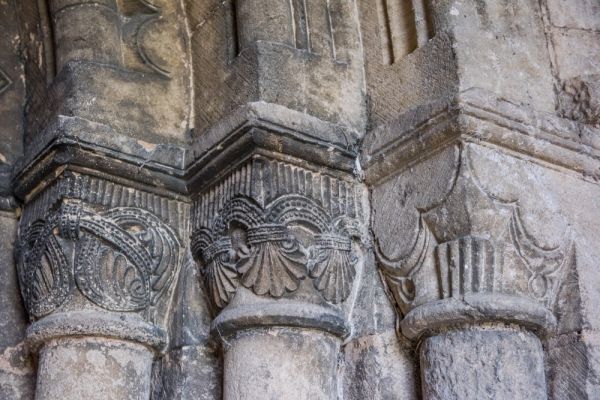
12th century doorway capitals
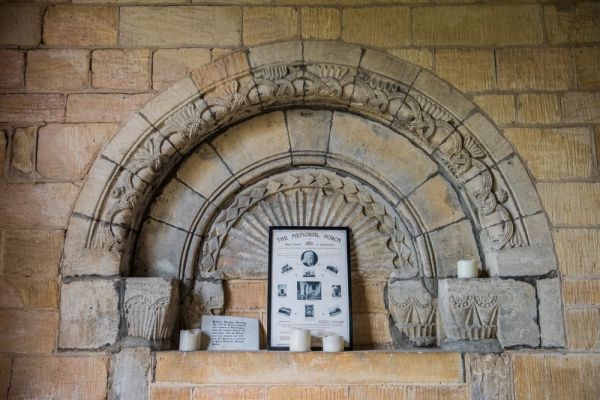
Medieval carved stones
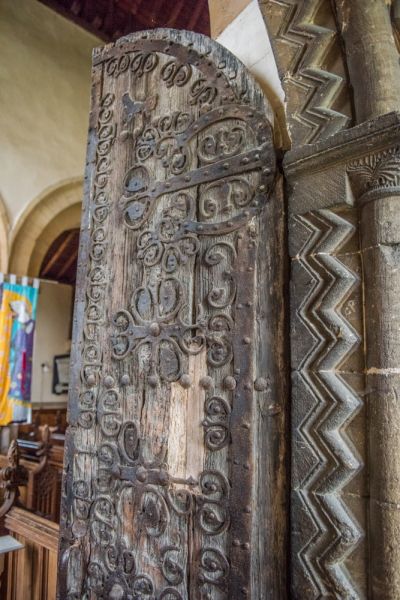
The ornate of 13th century door and ironwork hinges
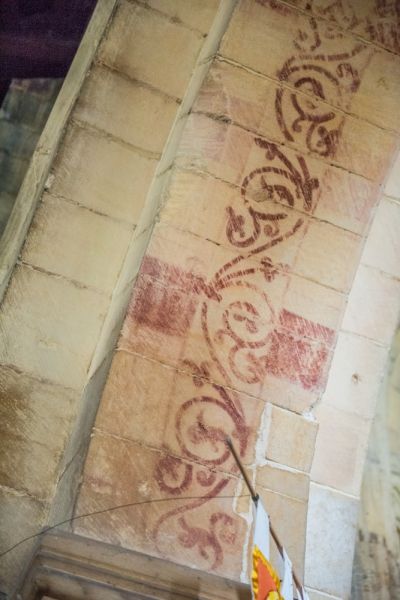
Medieval paint under a nave arcade arch




Nenhum comentário:
Postar um comentário
Observação: somente um membro deste blog pode postar um comentário.